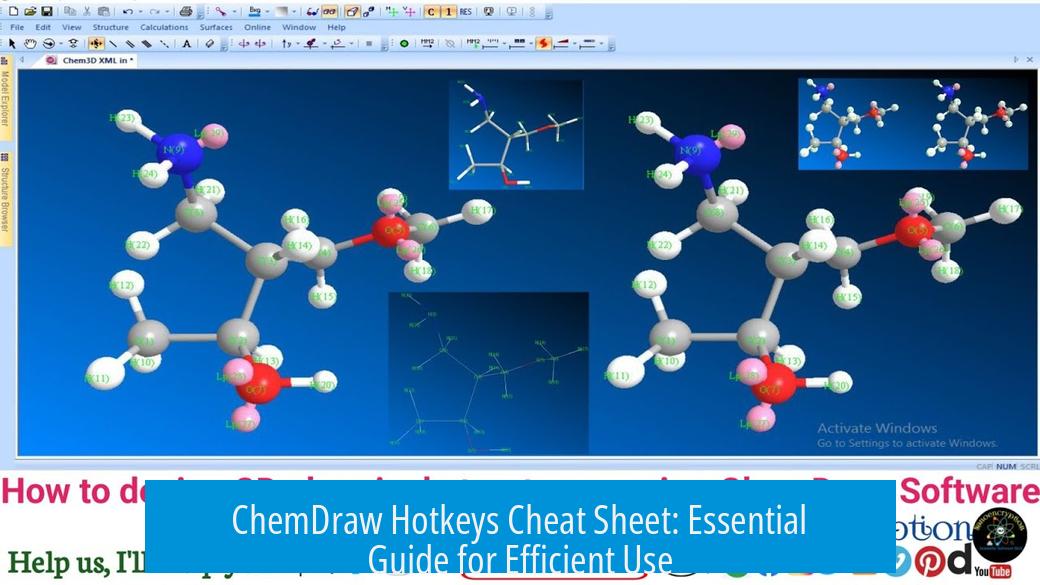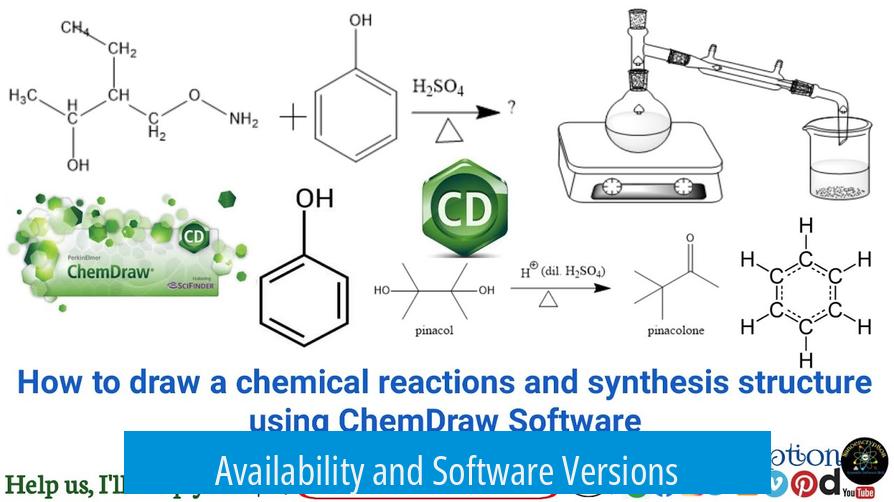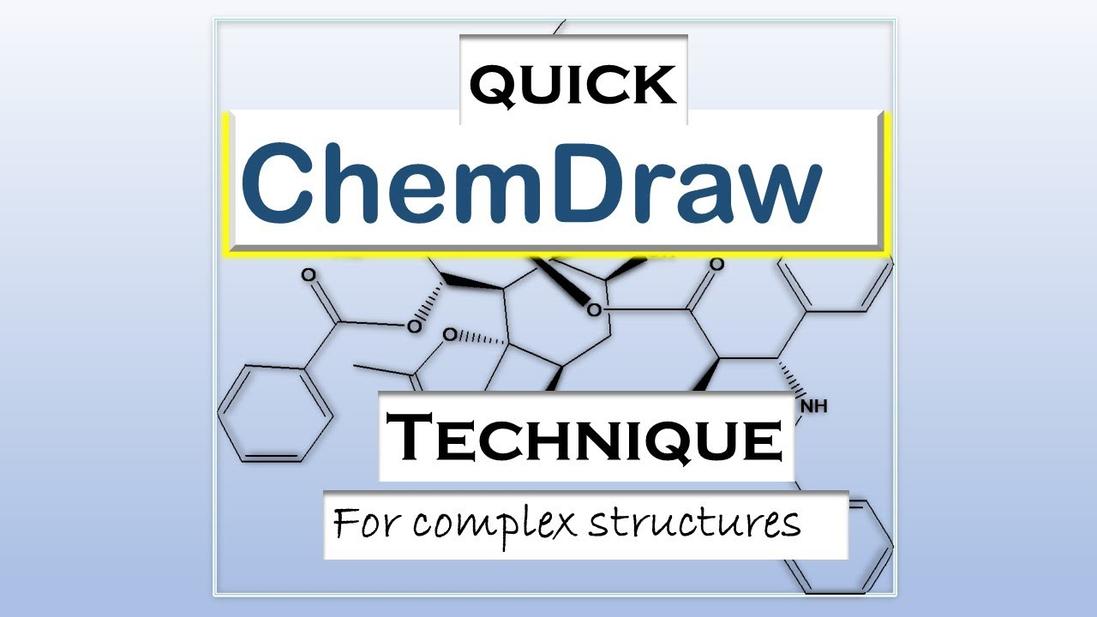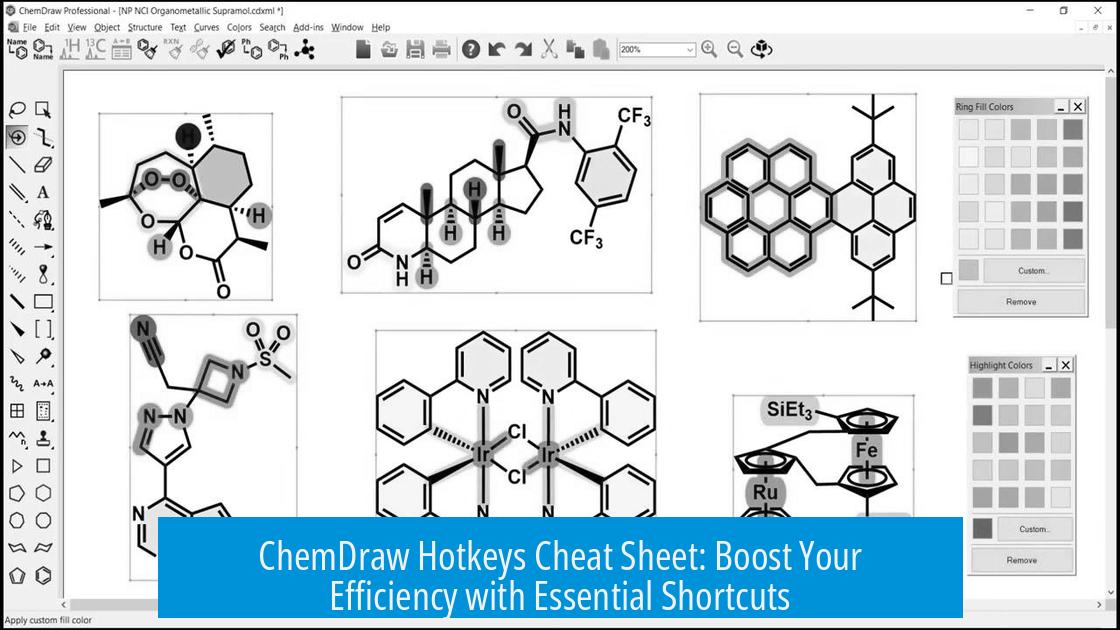ChemDraw Hotkeys Cheat Sheet: Essential Guide for Efficient Use

ChemDraw hotkeys are keyboard shortcuts designed to speed up chemical drawing tasks and improve user productivity. The cheat sheet lists these hotkeys for quick reference. It helps users swiftly access common functions without navigating menus.
Availability and Software Versions

Some hotkeys apply specifically to ChemDraw 20, the latest version, offering new shortcuts not found in prior releases. Users should verify their version compatibility before relying on certain keys.
After installing ChemDraw, the hotkey cheat sheet typically appears automatically. It can also be accessed via the Help menu, though some users find this provided sheet less detailed than desired.

Key Benefits from User Experiences
- Many users express enthusiasm, calling the cheat sheet “brilliant” and a great aid.
- Its discovery often leads to reflections on past work done without shortcut knowledge.
- Some users even rekindle interest in organic chemistry simply to apply these tools.
Limitations and Critiques
There remain missing shortcuts for certain features, such as “distribute” layout. Some users encounter issues using example hotkeys (e.g., Boron-related shortcuts). Another notable limitation is ChemDraw’s Windows-only support, restricting Mac users.
Additional Learning Resources
Video tutorials offer a practical way to explore hotkeys. For instance, Pierre from PE posts clear ChemDraw guides on YouTube. Another longer tutorial provides comprehensive feature walkthroughs.
Some organizations conduct dedicated training sessions, including live demonstrations of new features and effective hotkey use, fostering better proficiency.
Alternatives and Related Tools
- Users curious about similar hotkey listings for ChemDoodle inquire within communities.
- LaTeX users can opt for the chemfig package to create molecular diagrams programmatically, especially suitable for publication-quality graphics.
Additional Notes
Some users joke about a “Konami code” style input for secret functions, highlighting playful community interaction.
General control inputs such as R1, R2, L1, L2, and directional keys also feature in some workflows, useful in combination shortcuts.
Key Takeaways
- ChemDraw hotkeys enhance speed and precision in chemical drawing.
- Most hotkeys are version-dependent; verify ChemDraw 20 compatibility.
- Users benefit from cheat sheets, but deeper learning requires tutorials or training.
- Some features still lack dedicated shortcuts, limiting full automation.
- Alternatives like ChemDoodle and chemfig offer different approaches to molecular drawing.
The Ultimate ChemDraw Hotkeys Cheat Sheet: Unlock Your Drawing Speed!
Wondering how to turbocharge your ChemDraw experience? Using hotkeys is the secret sauce. The ChemDraw Hotkeys Cheat Sheet is your ultimate map to speeding up molecule sketches, reaction mechanisms, and that overwhelming eureka moment in organic chemistry. Let’s unpack the magic behind these keyboard shortcuts and how they change the game. Spoiler: You’ll probably wish you’d found this cheat sheet ages ago.
First off, if you just installed ChemDraw 20, get ready to meet some fresh hotkeys that only this version sports. These special keys unlock new functionalities, so you don’t just draw molecules—you command them. But heads up, some hotkeys are exclusive to ChemDraw 20, so if you’re on an older version, the cheat sheet might feel like a locked treasure chest.
Ironically, many users find this why-it’s-not-very-helpful pop-up at installation almost too subtle. It appears when you hit ‘help,’ but it’s more like a little ghost—present but elusive. Yet, once you dive in, this cheat sheet becomes your best lab partner. One user enthusiastically exclaimed, “Omg thank you! This is one of the greatest things I’ve ever seen but also one of the worst because I already completed organic and made all my reaction mechanisms without knowing these.”
Isn’t that the classic chemistry student’s lament when discovering a shortcut just a little too late?
User Voices and Their Hotkey Journeys
The sentiments range from joyous exclamations to nostalgic sighs. Some admitted they hadn’t touched organic chemistry in three years but now crave a comeback just to wield these shortcuts. Others fondly flashback to exam crunch time, wishing for this cheat sheet’s existence during their stress-fueled nights.
Yet, it’s not all sunshine. Users point out missing functions—like the absence of a hotkey for the “distribute” command—which forces many to keep reaching for the mouse. Another gripe? ChemDraw’s PC-only limitation that leaves Mac enthusiasts feeling left out in the cold.
Despite these hiccups, the cheat sheet fuels creativity and saves time, turning mundane repetitive tasks into quick key taps. You draw bonds, rings, and mechanisms faster than your professor can say “stereochemistry.”
Want to Master HOTKEYS? Check This Out!
The ChemDraw community never sleeps. Video tutorials by experts like Pierre from PE light the path beautifully. His ChemDraw quick-start video is concise and loaded with pro tips, while longer guides dive deeper for those craving mastery.
Also, some get live demos too. Like the two-hour Teams session led by a Perkin specialist, guiding eager chemists through new functions and explaining how to optimize their workflow with hotkeys. Nothing beats real-time interaction when untangling complex shortcuts, making chemistry feel less like rocket science.
Beyond ChemDraw: Alternatives and Allies
If ChemDraw isn’t your cup of tea or you fancy something else, ask around for a similar cheat sheet for ChemDoodle. This tool is gaining traction, and knowing its shortcuts can also spice up your chemical drawing game.
For the LaTeX crowd, the chemfig package offers stellar molecule illustrations. Using \documentclass{standalone} lets you generate molecule graphics swiftly. It’s a neat trick for those who prefer text-based inputs but still want visual impact in publications or presentations.
ChemDraw Hotkeys Cheat Sheet: The Fun Side
Among the scientific serious stuff, there’s room for humor. Someone sneaked in a classic gaming joke—“How about ↑ ↑ ↓ ↓ ← → ← → B A?” Yes, the famed Konami Code, cheekily suggesting we could unleash some secret ChemDraw feature if only. No such luck yet, but wouldn’t that spice up chemistry class?
Also, some cheeky references to game controller buttons like R1, R2, L1, L2 alongside arrow keys pop up in user conversations. It’s as if ChemDraw is inviting us to treat molecule drawing like an epic video game.
Imagine someone attempting a “speedrun” to draw a complex organic compound using every hotkey imaginable. It’s a fun mental image and almost a challenge to take on. How fast can you build caffeine or penicillin on your keyboard?
Wrapping It Up: Why You Need This Cheat Sheet
The ChemDraw Hotkeys Cheat Sheet isn’t just a list of keystrokes. It’s a companion that shaves minutes off your lab work and resurrects your excitement for organic chemistry. Whether you’re a student battling exams, a professor prepping coursework, or a professional sketching new molecules, hotkeys boost productivity and bring delight to the process.
- Save Time: No more hunting menus for simple commands.
- Reduce Errors: Drawing becomes smoother; fewer misclicks.
- Stand Out: Impress peers and supervisors by delivering work faster.
- Learn Smarter: Engaging video tutorials match cheat sheet learning.
Ready for your chemistry journey to go from “meh” to “wow”? Download that cheat sheet. Memorize a few hotkeys. Perhaps start your speedrun challenge. And who knows—maybe organic chemistry class will become your new favorite lab playground.
Now, which hotkey will you try first? The aromatic ring shortcut or the reaction mechanism tools? Whatever you pick, you’re on the way to becoming a ChemDraw wizard.
Remember, it’s not just about drawing molecules; it’s about drawing them with style and lightning speed.





Leave a Comment